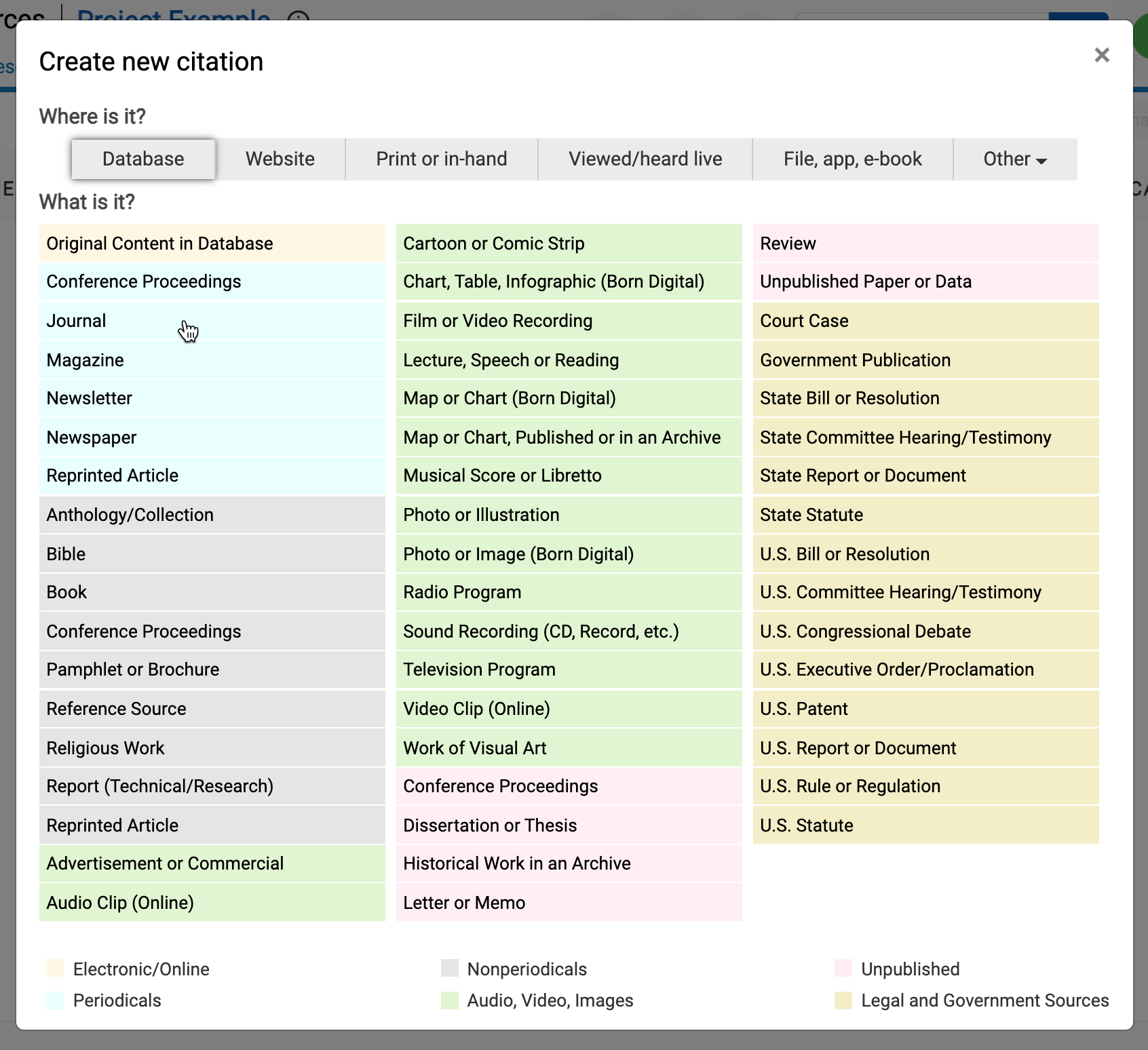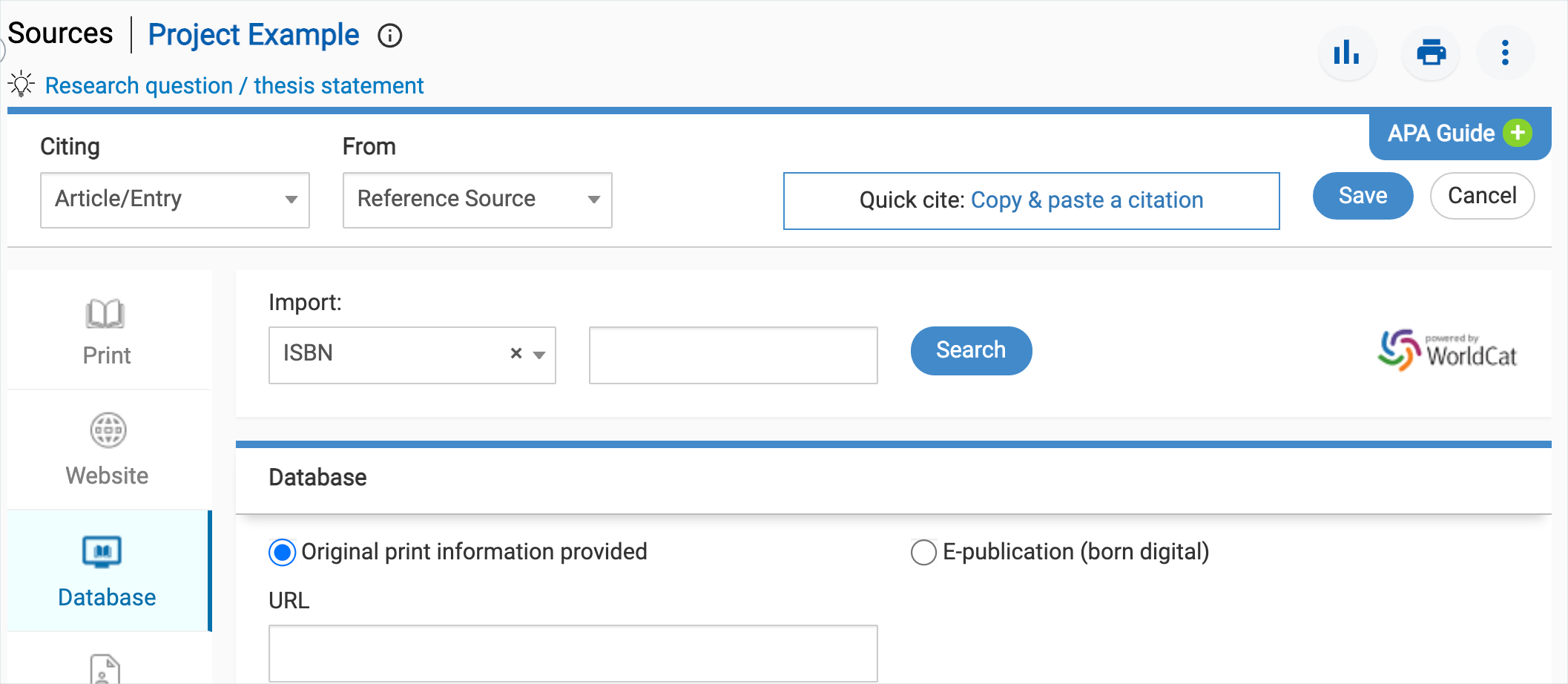Overview: When your list of citations is complete, export the list in order to print it with the formatting matching the requirements of the citation style you are using (margins, title, header, etc.).
Instructions
Step 1:
Navigate to your project's Sources screen.
Step 2:
Click the blue Export/Print icon button at the top of the screen.
Step 3:
Select a file format option from the menu:
|
Print/Export to Word |
Creates a Word (.docx) document that you can download and open in Word Online, Microsoft Word or Apple Pages. |
|
Print/Export as RTF |
Creates an RTF file, which can also be opened in most word processing programs. |
| Print/Export to Google Docs | Creates a Google Doc in your Google Drive. You may be prompted to select your Google account. |
|
Preview as Web Page (HTML) |
Opens your source list as a web page. |
| Formatting Options | Options to change the formatting of your sources list before exporting. See step 4 below. |
Important note: If selecting an option above does not generate the file, be sure that your browser does not have a pop-up blocker enabled that would prevent a new window from opening.
Step 4:
If you select "Formatting Options..." a panel opens. Click the formatting option you want and read the instructions on the panel to make adjustments.
Step 5:
To add the source list to your research paper, copy and paste the source list to the end of your research paper. It is customary to begin your source list on a new page, not on the last page of your research paper.
Step 6:
To print the source list, after the source list is exported in your word processor, print it using the program's "Print" command. Do not print the list in the "Preview as Web Page (HTML)" version because the web page uses only a close approximation of the correct spacing and formatting.
Hint 1:
If NoodleTools alerts you that your Google account does not match the information in your profile, go to "My User Profile" at bottom left (circle icon with your initials), and check that your Google account ID matches the account that is listed in the profile.
Hint 2:
If your computer is configured to open Word or another word processing program automatically, your source list may immediately download and open within that word processor. This may or may not be the word processor you are using to write the rest of your research paper. To save the source list, use that word processor’s "Save as..." to save the document in a format you want (e.g., in Word, as a .docx file) and to a location on your computer or network that you will remember.
Hint 3:
If your browser is configured to prompt you before opening the file, a browser pop-up window will appear asking you whether you would like to save or open the file. Click "Save" to put the file in a location on your computer or network that you will remember.
Hint 4:
A security message may notify you that the browser has blocked the site from downloading the file. Click the message to allow the download and follow hints 2 and 3 above.
Hint 5:
Do not re-save an .rtf file as an .rtf file after opening it in Word. Doing so will cause formatting issues due to the way Word handles RTF codes. Instead, save it as .docx.
















 This quick guide covers the following topics:
This quick guide covers the following topics:  This quick guide covers the following topics:
This quick guide covers the following topics: